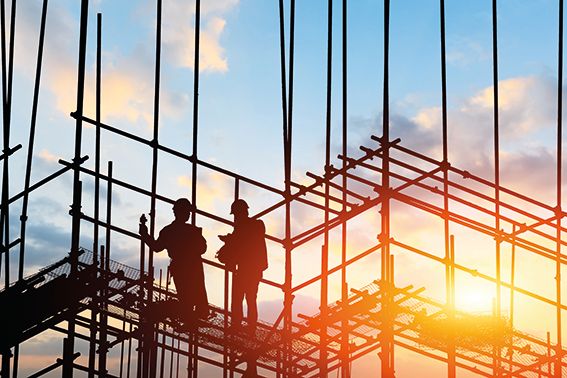
UK housebuilding suffered its steepest fall in three years, June construction data shows, as rising borrowing costs hit demand.
Residential work came in at 39.6 on the S&P Global/CIPS UK Construction PMI, its fastest decline since May 2020, weakening overall building data. A mark above 50.0 indicates growth.
The survey blamed “weaker demand due to rising borrowing costs and a subdued outlook for the housing market”.
It added that “aside from the lockdown-related fall in housebuilding, the rate of contraction was the fastest since April 2009”.
Overall, construction activity fell to 48.9 in June, down from 51.6 the previous month, “as a steep and accelerated downturn in housebuilding weighed on overall workloads”.
Civil engineering was the best-performing segment, coming in at 53.1, while commercial also expanded to 53.0.
Inflation is currently 8.7%, more than four times the central bank’s 2% target.
S&P Global Market Intelligence economics director Tim Moore says: “Weaker housing market conditions in the wake of higher borrowing costs acted as a major constraint on UK construction output in June.
“Aside from the lockdown-related fall in house building, the rate of decline was the fastest for just over 14 years. Survey respondents widely commented on cutbacks to new residential building projects and more caution among clients in response to rising interest rates.”
The Chartered Institute of Procurement & Supply Chief Economist Dr John Glen adds: “With interest rates at the highest for 15 years and inflation four times over the Bank of England target, the sudden reduction in construction sector hiring is one of the red flags facing the UK economy at the moment.”



